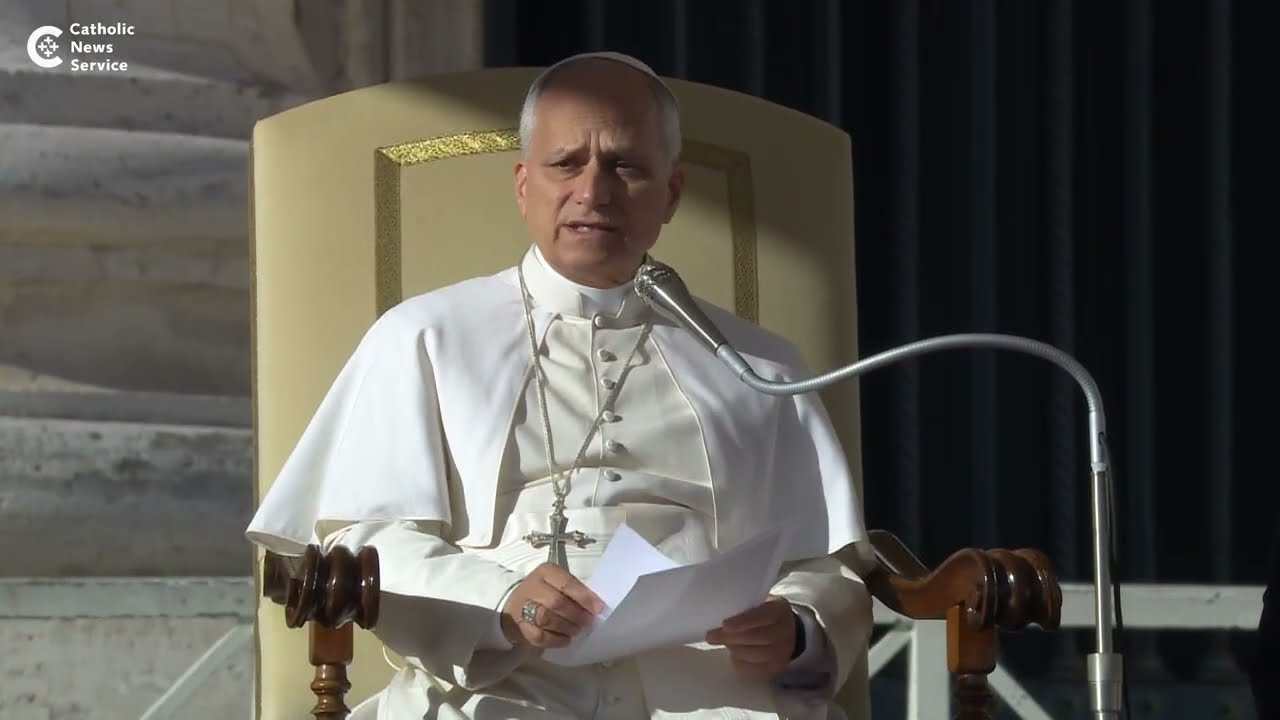Browsing News Entries
Pope Leo: Christian archaeology is vocation and form of love for Church and humanity
Posted on 12/11/2025 04:30 AM ()
In a new Apostolic Letter commemorating the centenary of the foundation of the Pontifical Institute of Christian Archaeology, Pope Leo XIV highlights the importance of archaeology, noting that this academic discipline bears witness to the fact that God became flesh.
Pope: Cultural diplomacy can build bridges and overcome prejudices
Posted on 12/11/2025 04:29 AM ()
Marking the 100th anniversary of the Pontifical Institute for Christian Archaeology, Pope Leo XIV invites students and faculty to engage in cultural diplomacy, serve as a tool for ecumenism through their work and be a reminder of Europe’s Christian roots.
Pope to Zayed Award organizers: Words are not enough, action is needed
Posted on 12/11/2025 03:30 AM ()
Speaking to organizers of the Zayed Award for Human Fraternity, Pope Leo XIV reflects on the need to be witnesses of kindness and charity in a world marked by division, whilst also taking concrete steps towards achieving fraternity.
Church consecrates Guinea-Bissau to the Immaculate Heart of Mary and calls for reconciliation
Posted on 12/11/2025 00:39 AM ()
The Catholic Church in Guinea-Bissau has solemnly consecrated the nation to the Immaculate Heart of Mary. The celebration was marked by calls for peace and prayers for reconciliation and the reinstitution of democracy after a military coup d'état.
UNRWA: We play a crucial role in Gaza’s political transition
Posted on 12/10/2025 08:51 AM ()
Two months after the ceasefire in the Gaza Strip took effect, UNRWA's Communications Director describes the ongoing humanitarian emergency and the need for a lasting political solution.
Live authentically with prayer, letting go of the unnecessary, pope says
Posted on 12/10/2025 08:30 AM (USCCB News)
VATICAN CITY (CNS) -- The secret to living an authentic life is praying to understand what is truly beneficial according to God's plan and letting go of the superfluous, Pope Leo XIV said.
In fact, death "can be a great teacher of life. To know that it exists, and above all to reflect on it, teaches us to choose what we really want to make of our existence," the pope said Dec. 10 at his weekly general audience in St. Peter's Square.
"Praying, in order to understand what is beneficial in view of the kingdom of heaven, and letting go of the superfluous that instead binds us to ephemeral things, is the secret to living authentically, in the awareness that our passage on earth prepares us for eternity," he said.
It was the pope's first general audience after returning from his first apostolic trip, a visit to Turkey and Lebanon Nov. 27-Dec. 2. An 82-foot-tall Christmas tree, which arrived Nov. 27 and will be fully decorated and unveiled with the Nativity scene Dec. 15, could be seen near the obelisk in the square.
Instead of using his general audience talk to recap his trip as had been the custom of his immediate predecessors, the pope did so after reciting the Angelus Dec. 7. At the audience, he continued his series of talks on the Jubilee theme of "Jesus our hope," focusing on "death in the light of the Resurrection."
"Our present culture tends to fear death and seeks to avoid thinking about it, even turning to medicine and science in search of immortality," Pope Leo said in his English-language remarks.
However, Jesus' victory of passing from death to life with his Resurrection "illuminates our own mortality, reminding us that death is not the end, but a passing from this life into eternity," he said. "Therefore, death is not something to be feared, but rather a moment to prepare for."
"It is an invitation to examine our lives and so live in such a way that we may one day share not only in the death of Christ, but also in the joy of eternal life," the pope said.
"The event of the Resurrection of Christ reveals to us that death is not opposed to life, but rather is a constitutive part of it, as the passage to eternal life," he said in his main catechesis in Italian.
"He has prepared for us the place of eternal rest, the home where we are awaited; he has given us the fullness of life in which there are no longer any shadows and contradictions," Pope Leo said.
Awaiting death "with the sure hope of the Resurrection preserves us from the fear of disappearing forever and prepares us for the joy of life without end," he said.
Canon lawyers present new standard work on child welfare
Posted on 12/10/2025 08:07 AM ()
Myriam Wijlens and Yeshica Marianne Umaña Calderón release an English-language textbook on child welfare, drawing on a long-running interdisciplinary course at the University of Erfurt. The volume outlines principles of the child’s best interests in ecclesiastical and international contexts and incorporates contributions from global experts involved in child protection.
Human Rights Day: Millions of children’s rights are being violated
Posted on 12/10/2025 07:01 AM ()
On Human Rights Day - commemorated each year on 10 December - the UN's children agency launches a new appeal for humanitarian action next year to provide aid to 73 million children across 133 countries.
Hong Kong: Asian Church leaders gather to discern AI’s pastoral impact
Posted on 12/10/2025 05:25 AM ()
A 3-day meeting in Hong organised by the Federation of Asian Bishops’ Conferences focuses on the challenges posed by Artificial Intelligence and the need to prioritise education and media literacy as safeguards for human freedom.
Pope prays for an end to clashes along Thai-Cambodian border
Posted on 12/10/2025 03:02 AM ()
As renewed clashes emerge on the border between Thailand and Cambodia, Pope Leo appeals for an end to hostilities, and prays for all victims.
